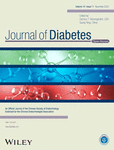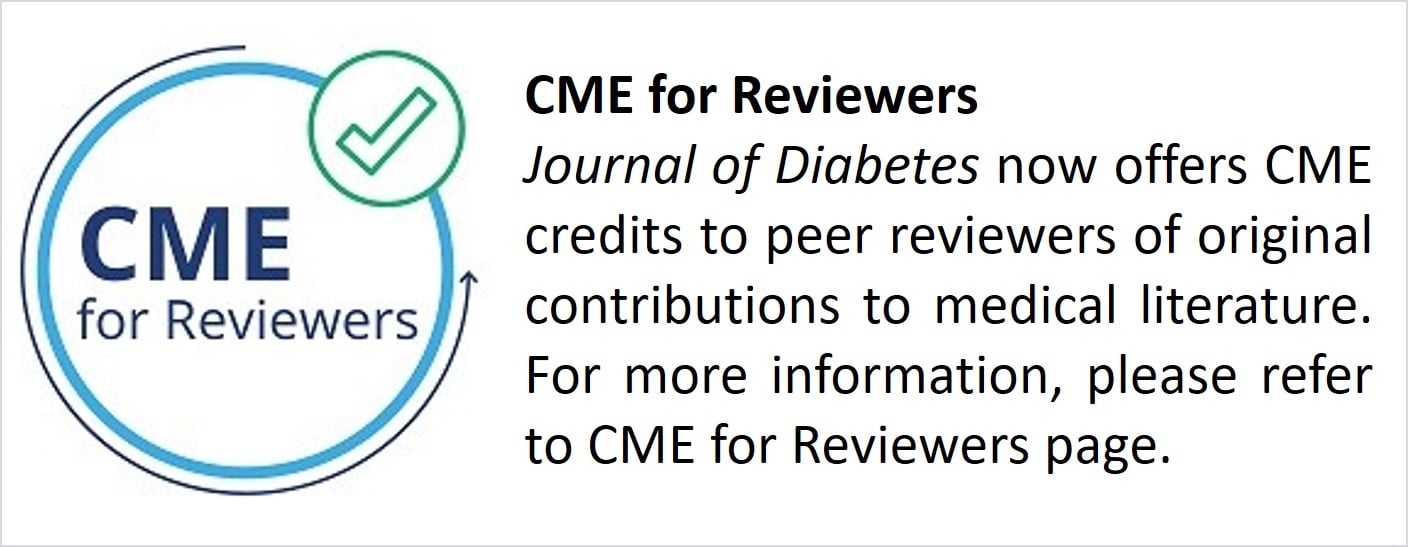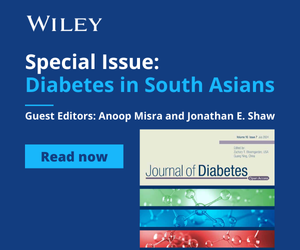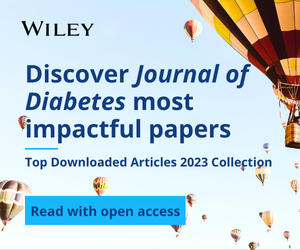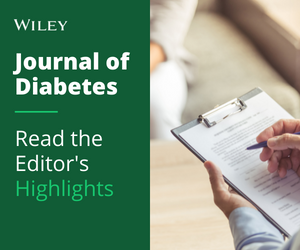Journal list menu
Export Citations
Download PDFs
ISSUE INFORMATION
EDITORIAL
Open Access
oa
Novel approaches to the treatment of type 1 diabetes
- Pages: 724-726
- First Published: 07 November 2022
EDITOR'S RECOMMENDATION
Open Access
oa
Long-term fasting glucose variability and risk of cancer in patients with type 2 diabetes mellitus: A retrospective population-based cohort study in Shanghai
2型糖尿病患者的长期空腹血糖变异性与癌症风险:上海地区一项基于人群的回顾性队列研究--空腹血糖变异性对癌症的作用
- Pages: 727-738
- First Published: 09 November 2022
ORIGINAL ARTICLES
Open Access
oa
Obesity mediates the opposite association of education and diabetes in Chinese men and women: Results from the REACTION study
在中国男性和女性中肥胖介导了相反的教育对糖尿病关联:REACTION研究的结果
- Pages: 739-748
- First Published: 11 October 2022
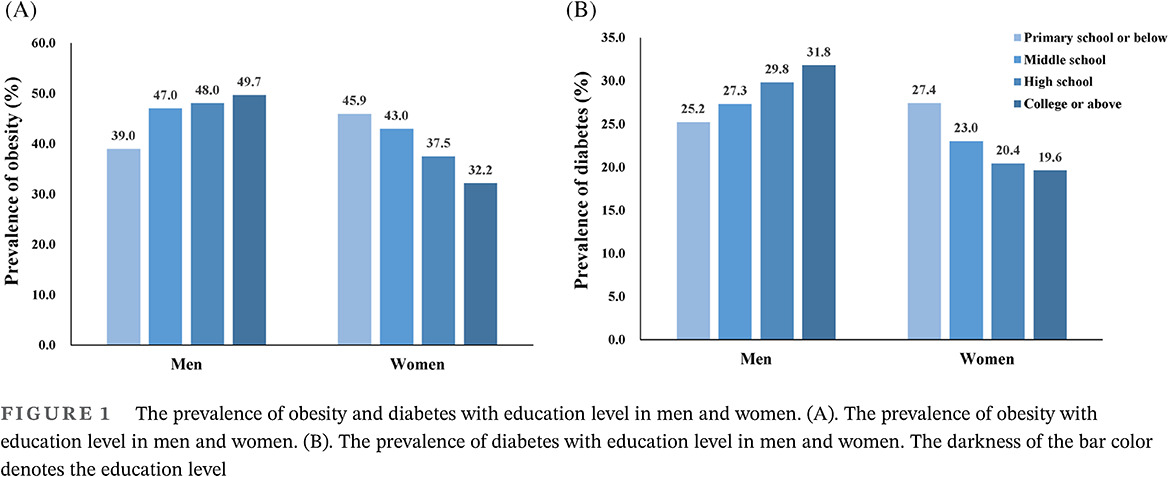
Highlights
- The association between education level and diabetes in Chinese adults is positive in men but negative in women.
- Obesity is the major mediator underlying the gender disparity in the association between education and diabetes.
- Combating obesity may help address the burden of diabetes across education levels in both genders.
Open Access
oa
Differences in receipt of recommended eye examinations by comorbidity status and healthcare utilization among nonelderly adults with diabetes
非老年糖尿病患者接受眼科检查的合并症状况和医疗利用情况的差异
- Pages: 749-757
- First Published: 26 October 2022
Highlights
Patients with diabetes who have comorbid medical conditions and are infrequent healthcare utilizers are at increased risk for not receiving recommended eye examinations.
Open Access
oa
Type 1 diabetes mellitus and SARS-CoV-2 in pediatric and adult patients – Data from the DPV network
儿童和成人患者中的1型糖尿病和SARS-CoV-2——来自DPV网络的数据
- Pages: 758-766
- First Published: 28 November 2022
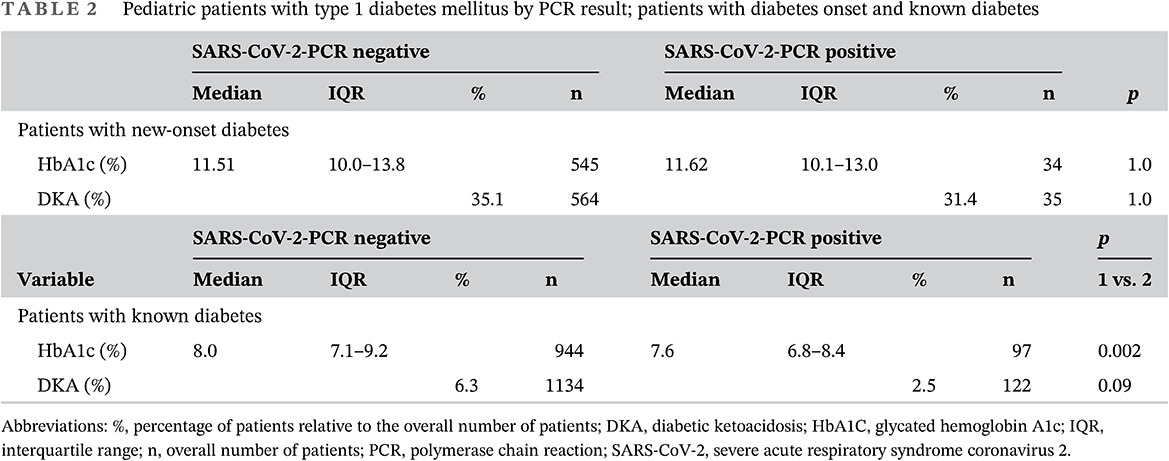
Highlights
- Diabetic ketoacidosis rate and HbA1c were not elevated in pediatric patients with type 1 diabetes mellitus (T1DM) and severe acute respiratory syndrome coronavirus 2 (SARS-CoV-2) infection.
- Pediatric patients with known T1DM did not show an elevated COVID-19 manifestation index; only pediatric patients with coincident SARS-CoV-2 infection and new-onset diabetes had an elevated rate of symptomatic infection.
- Adult patients showed an age-dependent increase in symptomatic SARS-CoV-2 infections and hospitalization rate.
Open Access
oa
Visit-to-visit variability of blood pressure and risk of macrovascular and microvascular complications in patients with type 2 diabetes: A Chinese primary-care cohort study
2型糖尿病患者就诊间血压变异性与大血管和微血管并发症的风险:一项中国初级保健队列研究
- Pages: 767-779
- First Published: 28 November 2022
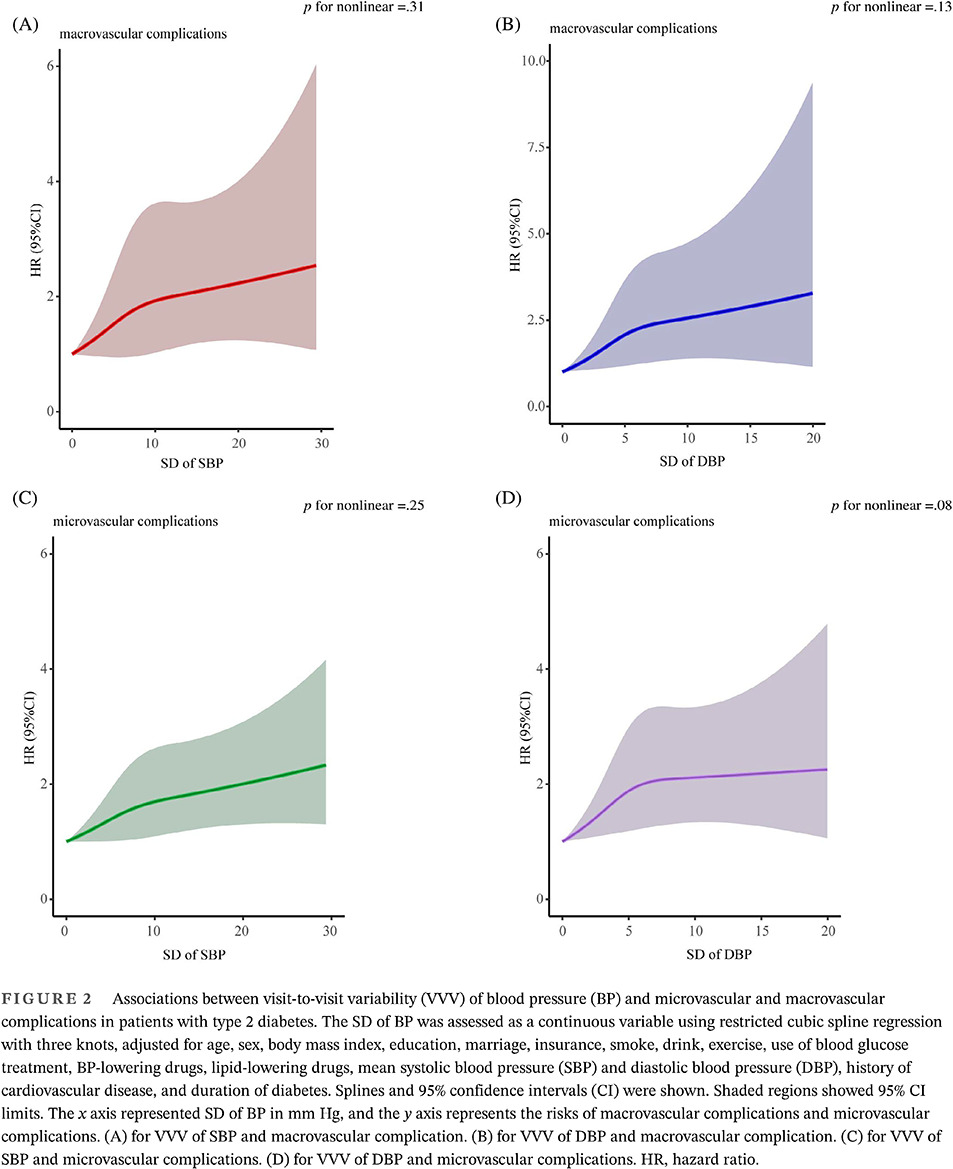
Highlights
- Evidence on the associations between visit-to-visit variability of blood pressure and risks of macrovascular and microvascular complications in patients with type 2 diabetes was insufficient and controversial.
- This study showed that greater variability of blood pressure was related to increased risks of macrovascular and microvascular complications for patients with type 2 diabetes.
- Our findings identified the optimal variability of blood pressure target for patients. Clinical professionals should also remain vigilant about the visit-to-visit fluctuation of blood pressure.
COMMENTARY
Open Access
oa
Commentary on the T1D exchange quality improvement collaborative learning session November 2022 abstracts
- Pages: 780-782
- First Published: 02 November 2022
LETTER TO THE EDITOR
Open Access
oa
Centering strengths of traditional knowledge and culturally sensitive interventions: Strategizing provision of prediabetes wellness interventions for indigenous peoples and ethnic minorities in the United States and across Southeast Asia
- Pages: 783-785
- First Published: 28 November 2022




